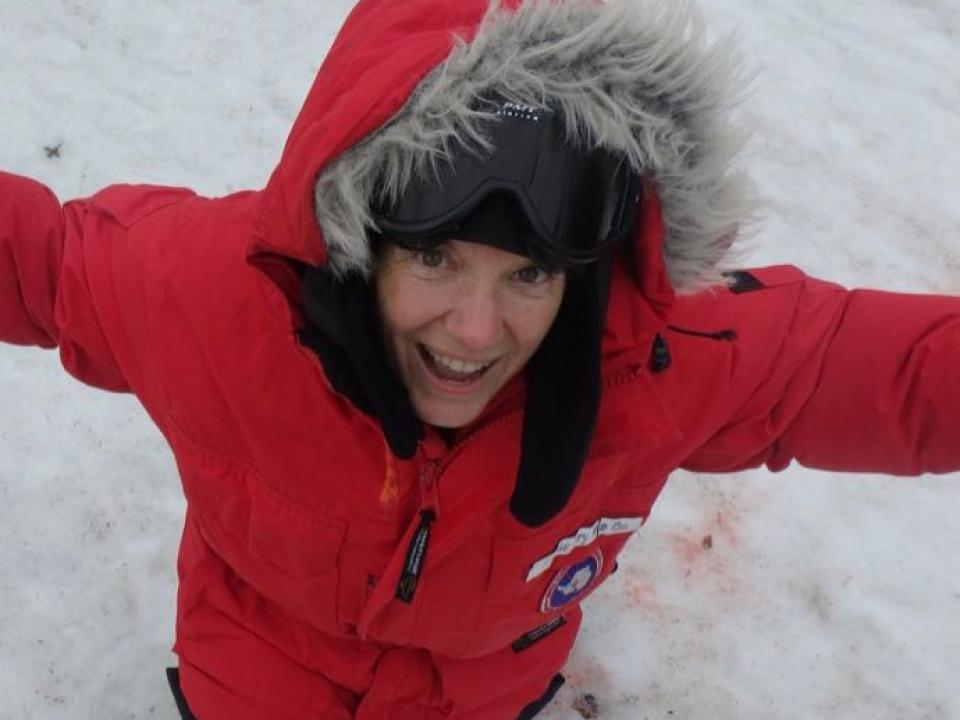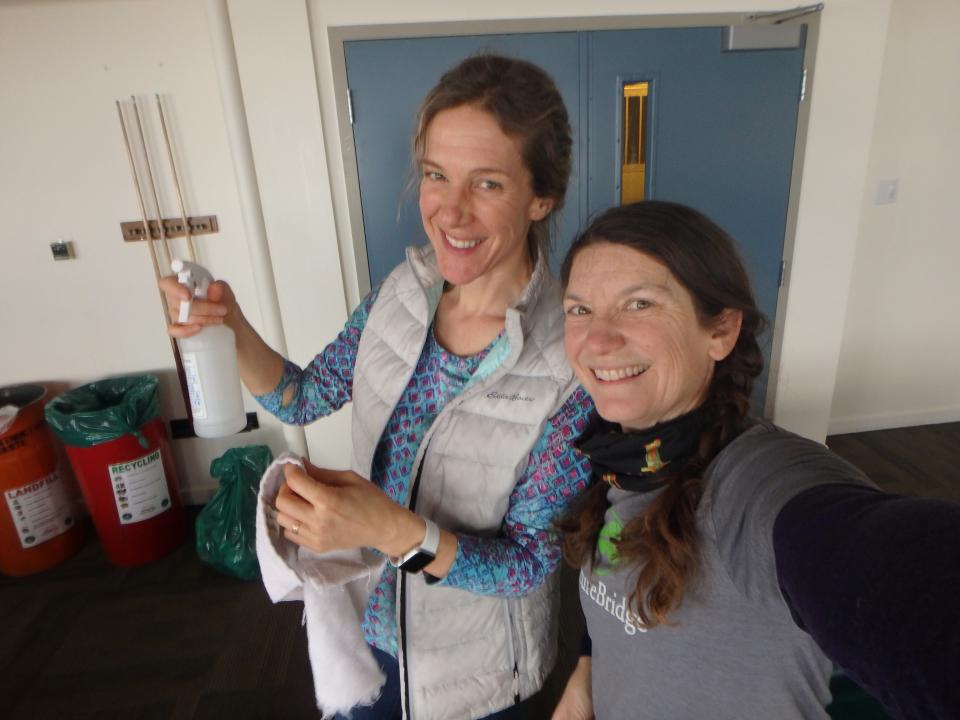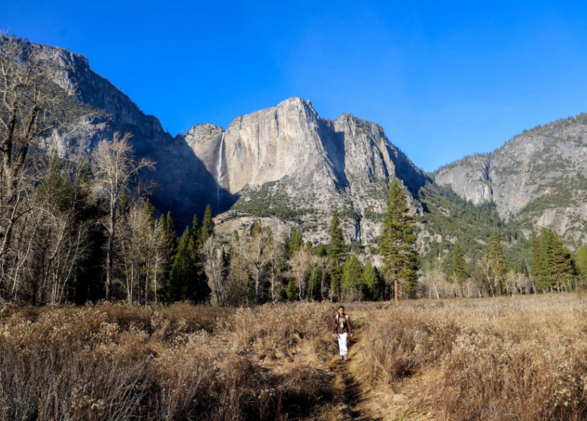Celebrating Female Superheroes: A Reflective Essay on Women in Science
As the roar of the airplane buzzed in my ears I gazed out the window of the C-130 at the sea ice far below and the mountains in the distance. I felt sad to be leaving this cold, white, icy place and the people who currently call it home. I'd miss visiting the sea spiders and nudibranchs every day and learning new things from Amy, Aaron, and Graham. I'd miss looking through microscopes and watching the eggs and larvae of marine invertebrates change over time. I’d miss the thrill of exploring a new place and the wonder and curiosity that comes with scientific research and makes me excited to share all I learned.
While the plane crossed a landscape mostly untouched by humans I reflected on my time as a PolarTREC educator in Antarctica. My heart overflowed with gratitude for an incredible experience and all of the people who made it possible and amazing. This experience taught me so much about research, teamwork, life under the sea ice, and made me eager to learn more. I remembered how nervous and excited I was when I first stepped onto the ice on a sunny windy day in October. Working with this team, researching on the icy ocean of Antarctica, and immersing myself in the science and community at McMurdo Station exceeded all of my expectations.
Ice, winds, vast whiteAmy Osborne
Nudibranch, spider, teamwork
Inspired mind and heart
I spent five weeks at McMurdo Station in Antarctica researching the impact of changing ocean temperatures on sea spiders and nudibranchs with Dr. Amy Moran and two Ph.D. students, Graham Lobert and Aaron Toh, from the University of Hawaii at Manoa. The time flew by as I learned how a research team works together to support one another, brainstorm, innovate, trouble shoot, and learn. As I watched and participated in the team going through this process I was constantly thinking about the pieces I could easily share with students. I am excited to return to my outdoor classroom and integrate more opportunities for team building, critical thinking, and design into the research projects I conduct with students.
One of my many highlights was traveling on the sea ice and supporting the divers as they explored below the ice. As we bumped across the sea ice to the dive sites, staring out at the vast whiteness of the Antarctic landscape and hearing the wind whip and hum of the Pisten Bully contrasted with the dark hole of ocean and silence once we arrived at the dive hut. After the divers were in the water, Graham and I recorded salinity, temperature, and oxygen percentages of the water, a routine I found comforting and piqued my curiosity as I noticed patterns over time. I thought of ways I could incorporate these same measurements into a larger project with students on the coast of California. Although I dreamed of being able to explore and collect with the divers, I felt fortunate as Graham and I took turns stepping outside the dive hut to enjoy the astounding quiet. Never before have I experienced such profound silence and I relished those moments.
During my expedition, I discovered a fondness for data collection and enjoyed staring through the microscopes at the tiny growing sea spiders and nudibranchs and filling in data sheets with information about my observations. My mornings were spent getting to know the animals better as I observed them and became curious about their movements, activity, and interactions. I loved watching the slow movements of the sea spiders, what item the sea urchins had chosen as a decoration each day, and the flowing bodies of the nudibranchs. I began to fall into a routine and between heading out into the field, supporting some of the lab work, conducting outreach, learning more about the animals and Antarctica, its history, and the people and other research projects and creating engaging and informative journals and videos my days became just as long and full as the rest of the research team.
As the C-130 continued toward open ocean and made its way to a greener land, I thought about how I found my time in Antarctica to be an unexpected and timely expedition of self-connection, deep reflection, and inspiration. Shortly after I was accepted to the PolarTREC program, and excitedly said “yes”, my mother, the person who instilled in me a sense of adventure and always encouraged me to pursue my dreams, was diagnosed with pancreatic cancer. The months leading up to my expedition were filled with highs and lows as our family thought her cancer was successfully removed, only to find out three months before my departure that the cancer had returned and was terminal. I remembered how my head spun trying to decide if I should even plan to leave the country, especially to a place as remote as Antarctica. I feel so grateful that with the support of my job and my family and friends, I was able to balance PolarTREC outreach, Antarctica preparations, my full-time job and spending time with my mom before her death on September 11, 2019. In October, I flew to Antarctica with a heavy heart and a head swirling with questions about life, purpose and next steps.
Although those questions still linger, my PolarTREC experience provided an amazing bright light in what felt like a very dark time. I loved the ability to immerse myself fully in research and to share it with all who would listen.
I wrote a journal entry about project lead Dr. Amy, who said I made her look like a superhero. That’s because she is one! From 16-year-old Greta Thunberg to 98-year-old Betty Reid Soskin, we need to continue to celebrate the female superheroes out there. They are the ones who inspire the rest of us. They are the ones little girls see as role models and—who make an eight-year-old girl sitting at home dreaming of being a scientist, perhaps studying seals, sea spiders and fish, or using robots and hoping to go on great journeys think “I can do that!”
And the rest of us need to realize we are superheroes too. As I search for a way to celebrate my mom and all of the other strong, hard-working, groundbreaking women out there, these thoughts, along with my incredible experience in the field in Antarctica, are helping me see a pathway forward with a focus on girls, science and the outdoors. Although my mind keeps seeking a grand way to celebrate the amazing women out there, I recognize that just by being me and continuing to connect kids to the natural world and to science, I am celebrating all women who are working hard to make this world we live in a better and more informed place.
I loved seeing women leading the way researching marine invertebrates, seals and penguins. I thought often of my mom’s strength and it inspired me and made my heart sing as I saw that same strength and dedication in the female scientists who surrounded me.Amy Osborne
As I stepped off of the plane in Christchurch, New Zealand, surrounded by the green growth of spring I felt surprisingly happy to be back. Although I miss my days on the ice and wish I could have stayed longer, I am excited to take the growth and learning I experienced in Antarctica and apply it to my life back in the states.
I’m excited to be back at NatureBridge finding creative ways to incorporate new ideas from my experience into our environmental science programs with students. I’m really looking forward to sharing the magic and wonder of science and research in Antarctica with a variety of audiences. I’m also excited to continue to grow as an educator and as a scientist and am hoping to take some marine science and field research courses.
I am so grateful to the PolarTREC program for reawakening in me a passion for science education. As I continue to connect with the research team and make more connections through my PolarTREC experience I am excited to see where the twisty path of life will lead me next. If you are interested in a visit from me to your classroom or organization or if you just want to hear more about my adventure first-hand feel free to contact me at aosborne@naturebridge.org. You can also learn more through my PolarTREC page.




